Microsoft Surface Go 2 vs Asus VivoBook 15: Two big-brand budget laptops go head to head
Looking for excellent value and decent performance? Both the Asus Vivobook 15 and Surface Go 2 will deliver, but which one should you buy?

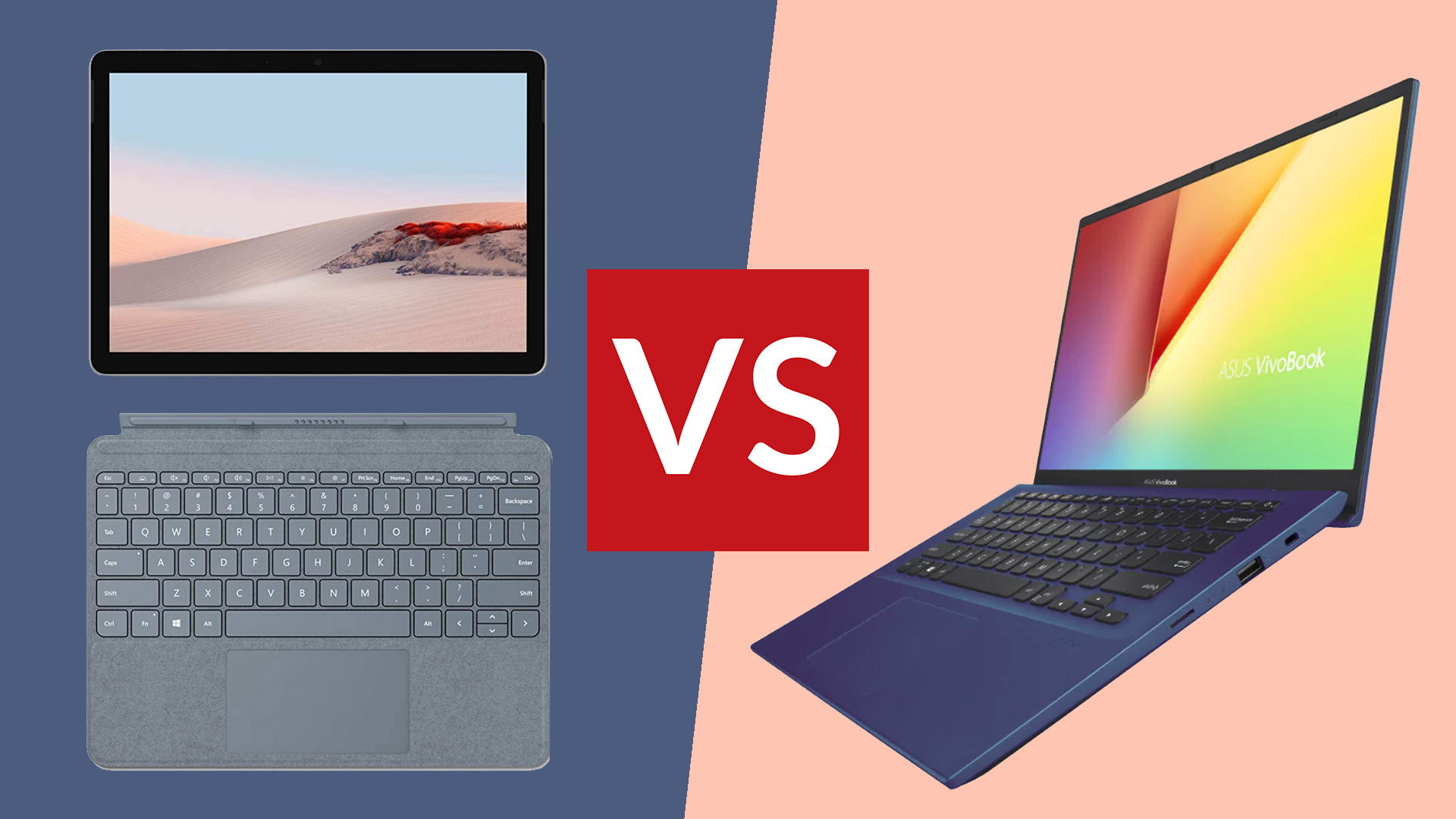
Looking for the best laptop for less than £500? The Asus VivoBook 15 vs Microsoft Surface Go 2 are two of your top options. But in many ways they are nothing alike, and represent two different routes to take when working with that budget.
The Asus VivoBook 15 is a sensible, no-nonsense work laptop with superb specs for the money and a large screen. You'll appreciate those extra inches if you plan on working all day in front of that display.
Microsoft's Surface Go 2 is a gorgeous little thing, a tablet with kickstand. You plug it into a keyboard base to get the full laptop experience, and this Type Cover wipes the floor with most other comparable typing accessories.
The Surface Go 2's display brightness and colour are in a different league, too. Buy one if you want something flashy and metallic, but it can't touch the Asus VivoBook 15 for performance per pound.
So which one is right for you? That's the question this feature is designed to ask. If you've got a bit more money to spend on your laptop upgrade then be sure to check out the best laptops on the market today, but if you want to spend cheap then one of these systems is likely a safe bet for you.
Asus VivoBook 15 vs Microsoft Surface Go 2: Design and Screen
The Asus VivoBook 15 and Microsoft Surface Go 2 represent two different laptop worlds. Asus's VivoBook 15 is a traditional laptop with a hinge that folds back a standard ~130 degrees. The Microsoft Surface Go 2 is a hybrid. It's a Windows 10 tablet that has an ingenious built-in kickstand, and hooks up to a separate keyboard module that sticks in place using magnets.
And here we find one of first things the budget-conscious need to consider about the Surface Go 2: it doesn't come with a keyboard as standard. You'll pay £100 for the Type Cover. And that means if your budget is £500 you can only afford the base-spec Surface Go 2. The optional stylus is an extra £100 too.
Get all the latest news, reviews, deals and buying guides on gorgeous tech, home and active products from the T3 experts
The good news is the Microsoft Type Cover is great. It's stiffer than you'd expect, has a smooth glass touchpad, proper key response and a backlight. It even sits at a slight upward angle for more comfortable typing. A Microsoft Surface Go 2 is great if you want something to carry around with you all the time. It feels a bit like a pad of paper.
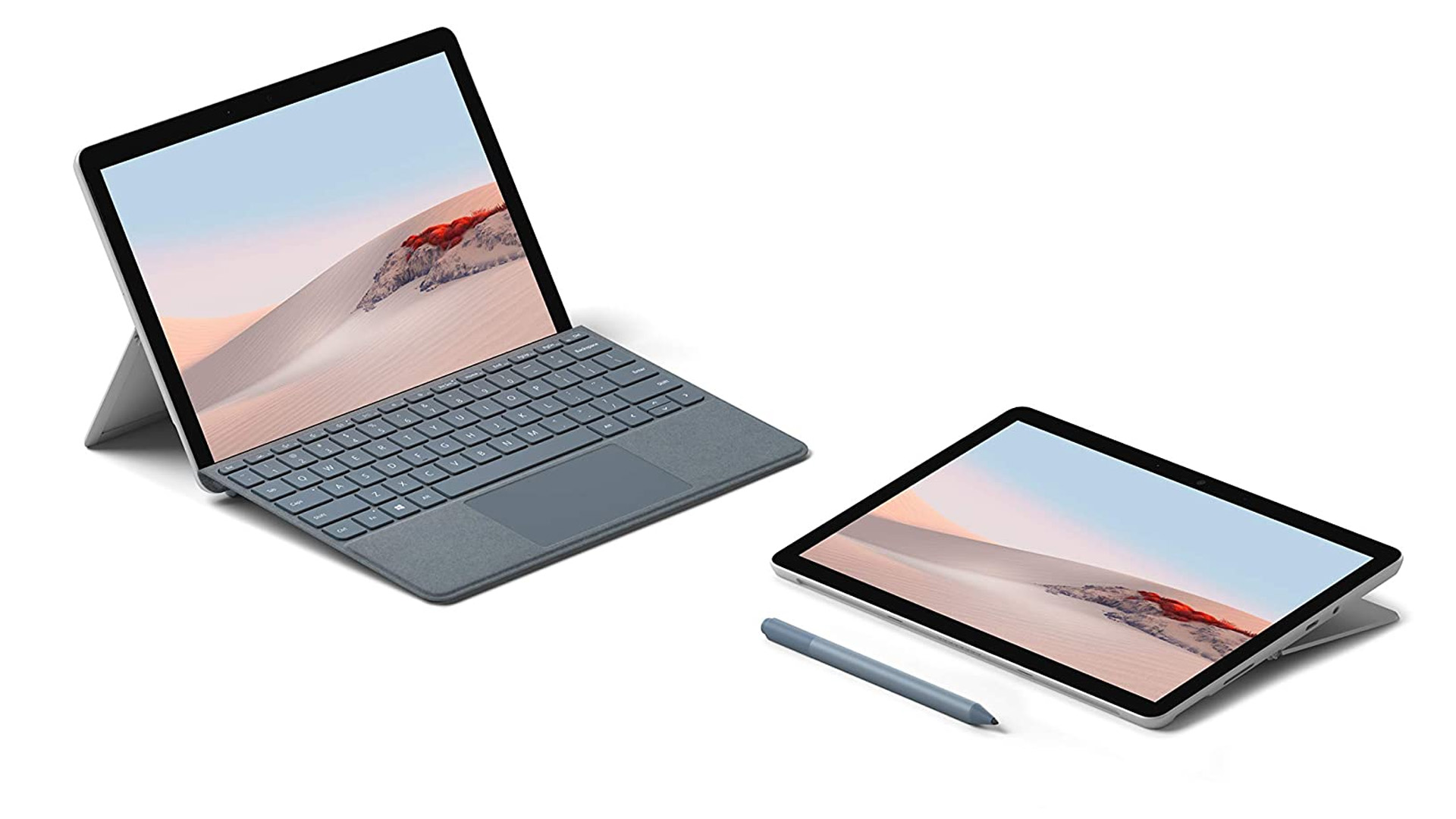
The Asus VivoBook 15 has surprisingly good portability for its class, as a 15.6-inch screen laptop, but it is not in the same league. While the screen borders are very slim for a budget model and its weight is relatively low, it's still around 1.7kg and is 20mm thick. The Surface Go 2 weighs just 544g, or 789g with the type cover.
Their build styles have little in common too. The Surface Go 2 is made using a magnesium alloy, a very light metal that still feels much better than plastic. Asus's VivoBook 15 is plastic, and doesn't have the same expensive-feeling rigidity.
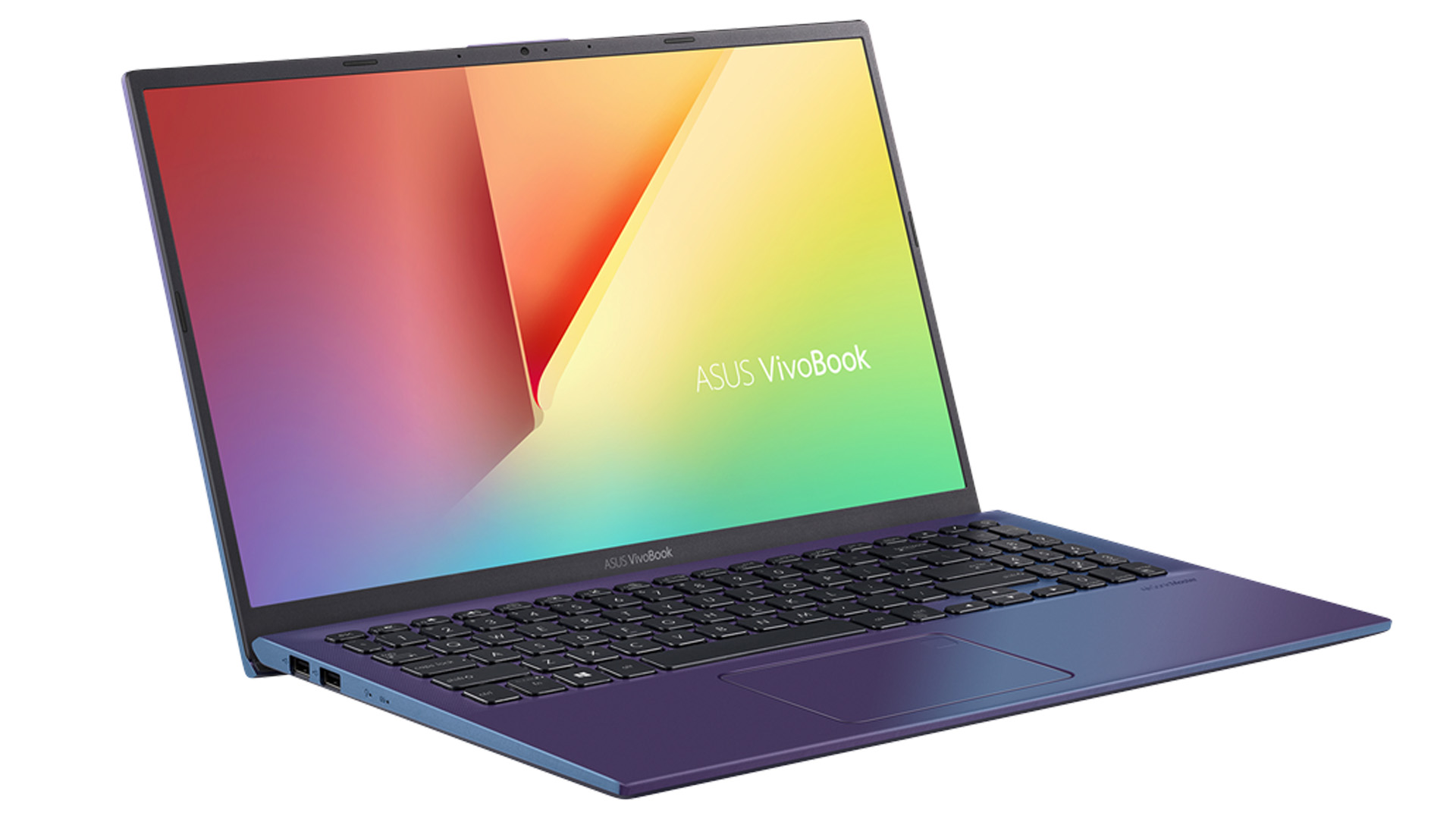
Laptops like these two have to choose where they let compromise in. A plastic construction is one of the VivoBook 15's compromises, but it does help keep its weight relatively low given its large screen.
Display quality is another area where you see the tight budget in effect. The VivoBook 15's screen is sharp enough, at 1080p resolution, and the space on offer is great. But the smaller 10.5-inch display of the Surface Go 2 is sharper per-inch at 1920 x 1280 pixels and has far superior brightness, colour depth and contrast.
The Asus may make movies look big, but the Surface GO 2 really makes them pop. The Surface also has a touchscreen with a Gorilla Glass covering, while the non-touch VivoBook 15 has an anti-reflective coating to make the most of its not-exactly-scorching brightness.
The Surface Go 2 has the techy gloss the VivoBook 15 lacks. But which would we rather work all day on? Probably the VivoBook. The large screen and solid keyboard, with tasty1.4mm key travel, are just what we are after in a work machine.
- Browse the best 2 in 1 laptops
- These are the best student laptops right now
Asus VivoBook 15 vs Microsoft Surface Go 2: Specs and performance
Asus's VivoBook 15 also claws back some cred on the performance side. There are numerous specs for both of these laptop families, but let's focus on the one you can buy all-in for around £500.
The Asus VivoBook 15 offers either an Intel Core i3-1035G1 processor with 4GB RAM and a 256GB SSD or an AMD Ryzen 5 processor with 8GB RAM and, again, a 256GB SSD. Both are strong load-outs for the money but we recommend the Ryzen flavour model. The extra 4GB RAM is useful, it has more CPU cores and a much better graphics chipset.
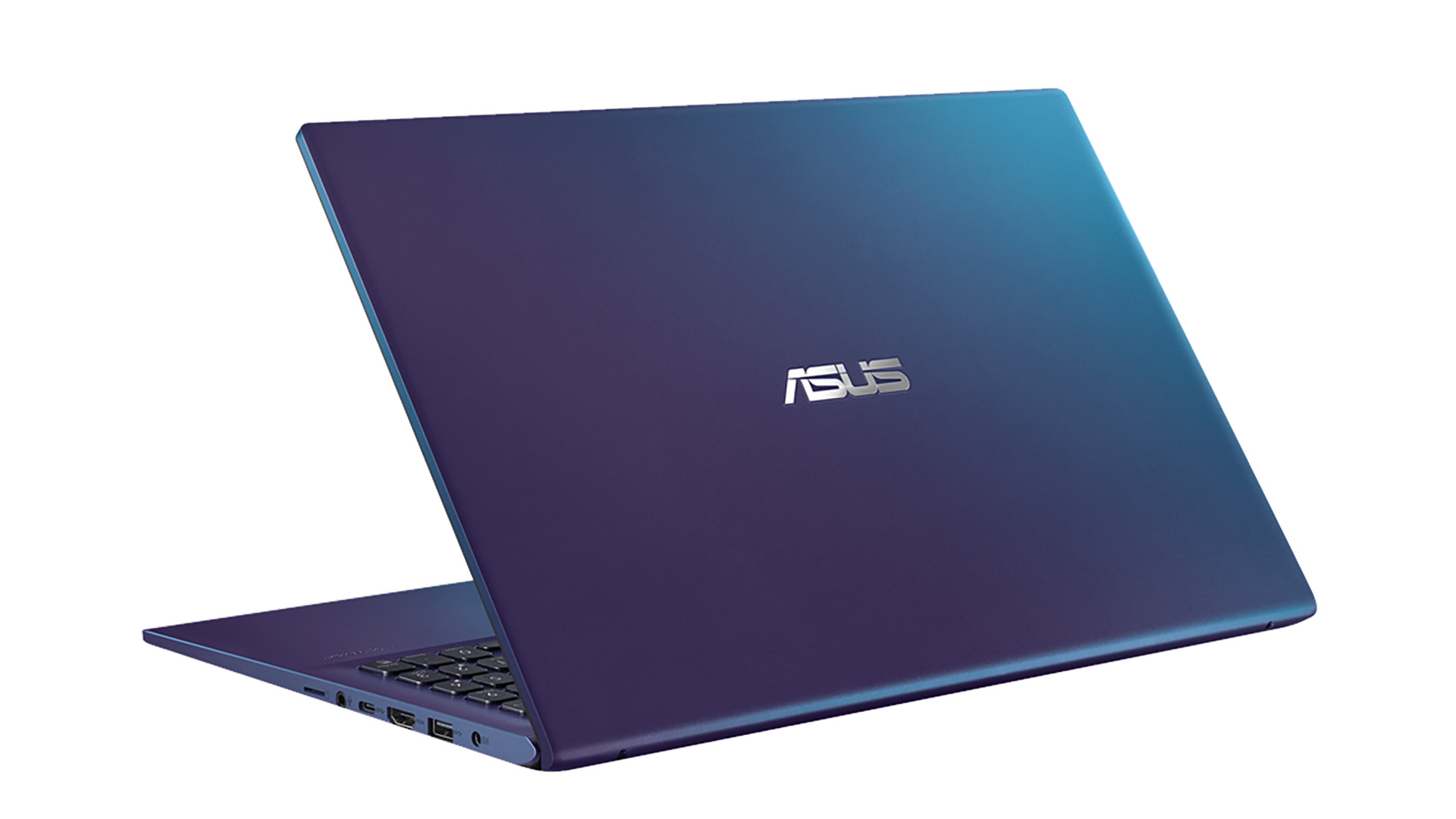
Want a Surface Go 2? Its base model has the Intel Pentium Gold 4425Y CPU, 4GB RAM and just 64GB storage. This only offers around a quarter the processor power of the Ryzen VivoBook 13. The Surface Go 2 gets by for the basics, but apps load more slowly and Windows 10 won't feel as snappy as it does on the VivoBook 15. If you even want to get close to apps like Photoshop or video editing suites, the Asus is a better buy. And it can handle games better too.
Performance is better with the more expensive Surface Go 2 laptops. If you're willing to pay more, Intel M3 CPU versions cut out most of the basic lag – but even this isn't not even close to the entry-level Intel and AMD VivoBook 15s.
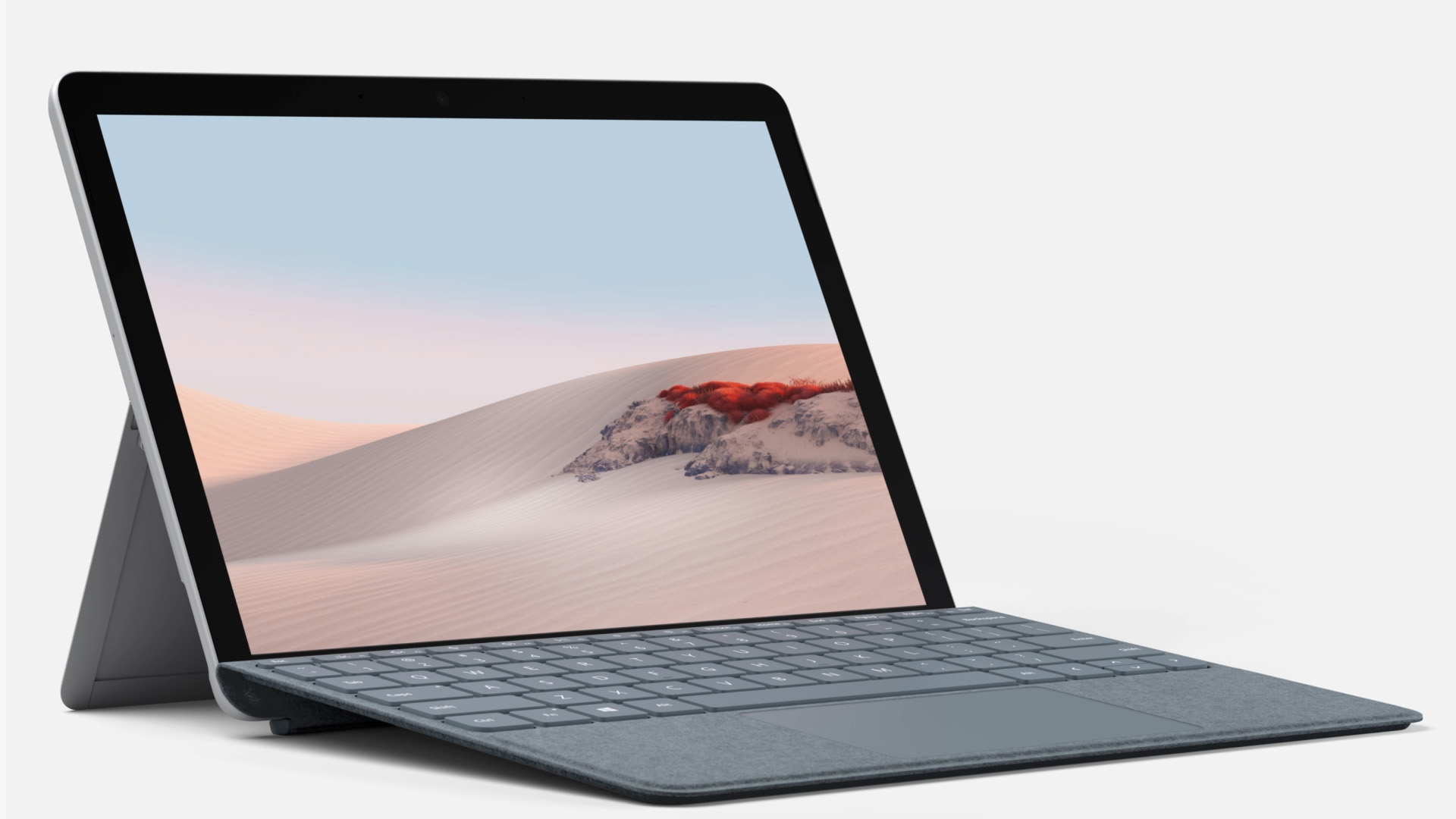
This is one reason the Surface Go 2 ships with Windows 10 S, a 'cut back' version of the OS that only lets you install apps from the Windows Store. But you can take off these training wheels if you like. Switching to full Windows 10 costs nothing, and is easy to do.
Despite all the power we still prefer the Surface Go 2 for video chat. Its 5MP front-facing camera doesn't just steamroll the Asus, but almost every other 'normal' Windows laptop, including plenty at over double the price.
Neither laptop is a battery master. Expect either to last around five hours between charges. Check out the Asus VivoBook S15, the step-up model, if you want something closer to all-day stamina.
Care about connections? The VivoBook 15 has more of them. No surprise there. You get one fast full-size USB port, and two slow ones for peripherals like mice. There's also a USB-C, a full-size HDMI and a microSD reader. The Surface Go 2 has just the one USB-C and a microUSB. But you can still use that USB to connect a monitor if you want to.
Asus VivoBook 15 vs Microsoft Surface Go 2: Price and verdict
This comparison has been a bit of a ride. It looked like the Microsoft Surface Go 2 was the obvious choice at the beginning. It has high-end style you don't see in normal laptops at the price, a lovely screen and far better portability.
But the Asus VivoBook 15 has an ace card: performance. Buy the right version and it can handle many things the Surface Go 2 just can't hack, and will make Windows 10 feel slicker all-round.
For casual use around the house? Sure, the Microsoft Surface Go 2 is a great fit for the basics of video streaming, email and word processing. You get the iPad-like high-end build with the flexibility of Windows. Those who need to work all day on their laptop or want the best performance per pound/dollar should head to the Asus VivoBook 15 instead.
Our favourite Asus VivoBook 15 model costs £499, and has a Ryzen 5 CPU, 8GB RAM and 256GB SSD. Intel fans can get a Core i3 version at a similar price, but with 4GB RAM instead of 8GB.
The cost of the Surface Go 2 may initially seem lower, at £399. But consider the added cost of the must-have Type Cover (£100), and that for less of a performance compromise you'll need to upgrade to the £619 Intel Core M3 version. Once again, that price does not include the keyboard add-on.

Andrew is a freelance tech and entertainment journalist. He writes for T3, Wired, Forbes, The Guardian, The Standard, TrustedReviews and Shortlist, among others.
Laptop and computing content is his specialism at T3, but he also regularly covers fitness tech, audio and mobile devices.
He began writing about tech full time in 2008, back when the Nintendo Wii was riding high and smartphones were still new.